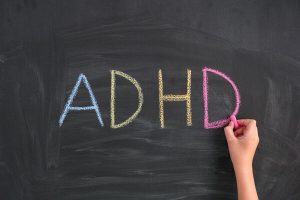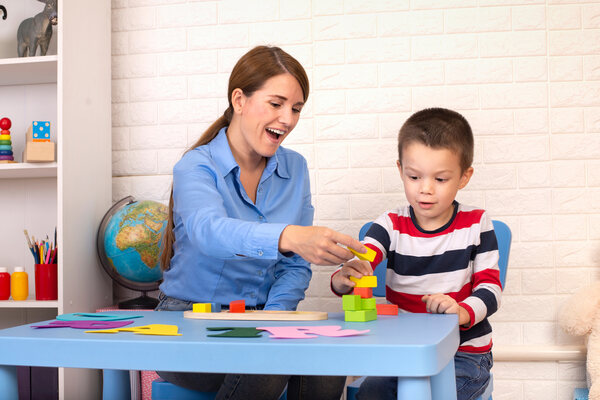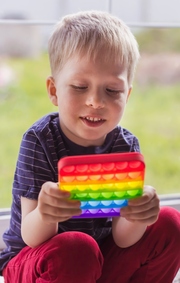From Fidgets To Focus: How ADHD Toys Benefit Preschool Development
Imagine walking into a classroom full of energetic preschoolers. It can be such an overwhelming experience! This rings true whether you’re a teacher or a parent. But have you ever thought about how it can even be more challenging for a child with attention-deficit/hyperactivity disorder (ADHD), whose mind and body struggle to focus and remain still?
So, just think about how crowded places and the sensory overload they entail affect them. Fortunately, there’s a solution: ADHD toys.
Studies have shown that ADHD toys offer numerous benefits to preschoolers. But what are these types of toys? How do they help ADHD and non-ADHD preschoolers exactly? Those are some of the things that we’ll talk about in this post. So, if you’re ready to learn more, please read on!
Understanding ADHD in preschoolers
Let’s try to understand ADHD more first. It’s a neurodevelopmental condition. And while it affects people of all ages, its symptoms first appear during childhood. In fact, the number of children that have been diagnosed with ADHD from the age of three to 17 has reached six million from 2016-2019.
So, if you want to know whether an individual has ADHD, observing them during their preschool years might help. Hyperactivity, difficulty sustaining attention, and impulsivity are some of the various symptoms you must keep an eye on.
 Again, whether you’re a teacher or a parent, you understand how important preschool is. It’s a critical stage for acquiring language development, problem-solving, emotional regulation, and other fundamental skills. The problem is that with ADHD, these developmental milestones may become more challenging to achieve. What can you do if that’s the case? Utilize tools that can assist children as they develop during their preschool years, like the ADHD toys online or the ones you can find in toy stores.
Again, whether you’re a teacher or a parent, you understand how important preschool is. It’s a critical stage for acquiring language development, problem-solving, emotional regulation, and other fundamental skills. The problem is that with ADHD, these developmental milestones may become more challenging to achieve. What can you do if that’s the case? Utilize tools that can assist children as they develop during their preschool years, like the ADHD toys online or the ones you can find in toy stores.
The importance of play in preschool development
Children want to play. That’s just the way it is. What many people don’t realize, however, is that playing is more than just having fun, especially for a child. It holds immense significance in their growth and learning, particularly for preschoolers. By playing, young children get to explore and make sense of the world around them. Surely, it’s the same way you learned about the world around you as a toddler. That’s why experts recommend embracing and promoting play in order to create an environment that cultivates a child’s cognitive, social, and emotional skills.
Introduction to ADHD toys
As their name suggests, ADHD toys are specifically designed for children with ADHD. What’s great about them is that they address the unique needs and challenges associated with the condition. How do they do it? It’s by providing children with engaging and therapeutic experiences. The development of attention, focus, and self-regulation skills are what ADHD toys support.
As a teacher or parent who deals with children with ADHD, you’d be glad to know that you can find a wide range of these toys on the market. Fidget, sensory, and educational toys—you can choose based on what you think can best assist a child. Do you want something that can help children channel their excess energy and improve focus? A fidget spinner or stress ball would be a good idea.
It’s important to note, however, that while ADHD toys can be valuable in the development of children with ADHD, it’s still best to approach the condition holistically. It means that you shouldn’t make the mistake of ignoring other interventions, such as therapy and parental support.
Benefits of ADHD toys in preschool development
How do ADHD toys specifically impact the lives of preschoolers with ADHD?

Improved focus and attention span
Remember that children with ADHD find it challenging to focus and remain still? ADHD toys can engage and hold their attention. As a result, they can focus more, sustaining their attention span. Fidget spinners or stress balls, for instance, offer tactile stimulation, keeping a child’s restless hands busy and focused.
Enhanced fine and gross motor skills
In addition to improving focus and attention span, some ADHD toys enhance fine and gross motor skills by encouraging movement and coordination. Good examples are balance boards and therapy balls. A therapy putty can also be a good option in aiding motor skill development as it helps improve grip strength and hand-eye coordination. If you want to encourage movement, you can’t go wrong with resistance bands, too.
Facilitated sensory integration
Some ADHD toys offer different textures, sounds, and tactile experiences. They help stimulate and regulate sensory input by soothing sensory anxiety and regulating emotions. You can choose from sensory bottles and bins as well as textured balls and smooth wooden toys for this purpose.
Promoted social interactions and emotional regulation
Finally, but definitely not least, ADHD toys promote turn-taking, sharing, and collaborative play. And the result of that? Social skills encouragement. Not only that, but children will also learn conflict-resolution skills and build positive peer relationships.
Of course, positive peer relationships through collaborative play can help children with ADHD practice regulating their emotions. But does your child have a natural tendency to feel angry or distressed easily? ADHD toys such as stress balls, sensory pillows, and calm-down jars can also help. They can be an outlet for emotional release or a tool for children to learn self-regulation during moments of distress.
Do you want to enhance the overall well-being and development of a child with ADHD? If so, then you need the right toys incorporated into their play and learning environment.
Conclusion
ADHD toys are perfect for preschoolers with ADHD—there’s no doubt about that. Couple them with the right interventions, and they can help these kids reach their full potential, ensuring that they thrive despite the challenges their condition brings.





 Explore the Safe Search Engine -
Explore the Safe Search Engine -